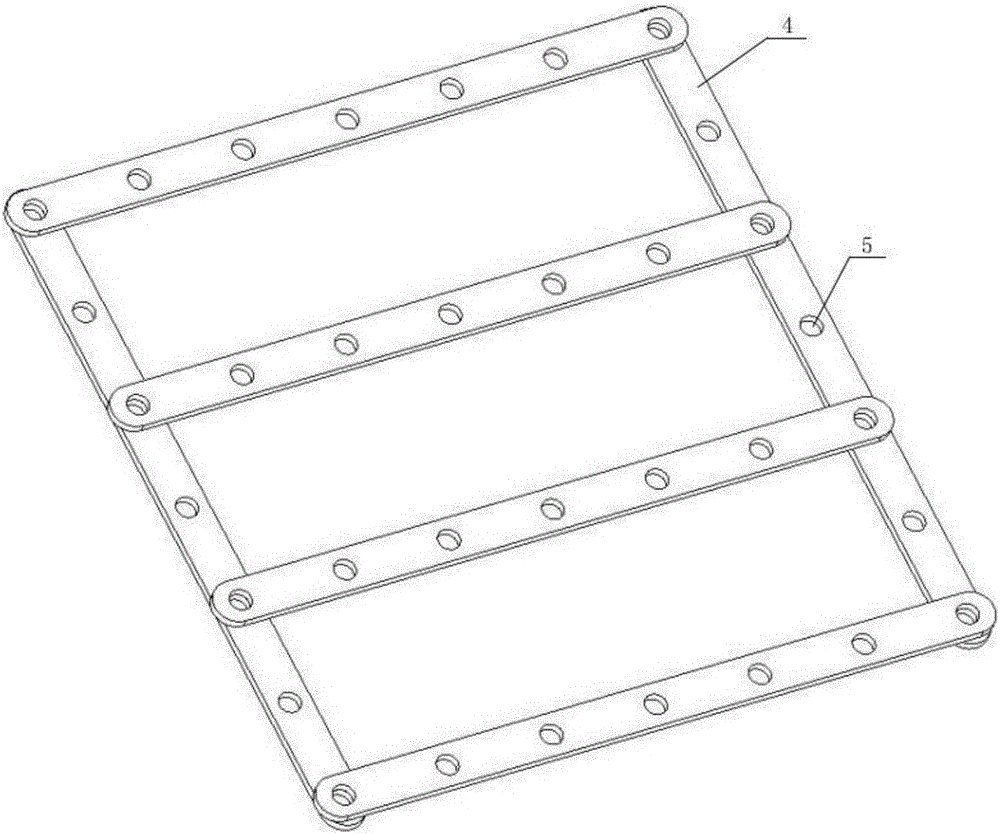Bone restoration for large-area craniofacial bone defect
A bone prosthetic and craniofacial technology, applied in the direction of skull, bone implants, etc., can solve the problems of inability to achieve bony repair of craniofacial defects, difficulty in making prosthetics in time, and inability to achieve cranial and maxillofacial regeneration. , to achieve the effect of shortening production time, strengthening practicability and flexibility, and avoiding long waiting
- Summary
- Abstract
- Description
- Claims
- Application Information
AI Technical Summary
Problems solved by technology
Method used
Image
Examples
Embodiment Construction
[0025] The specific embodiments of the present invention will be described in detail below with reference to the accompanying drawings.
[0026] Such as figure 1 , figure 2 As shown, a bone restoration for a large-area cranio-maxillofacial defect includes a support structure 1, an osteogenic structure 2 and a fixing nail 3. The support structure 1 includes a structural beam 4, and the structural beam 4 is A number of fixing holes 5 are provided along the length direction, the fixing nail 3 is movably connected to the fixing hole 5, the osteogenic structure 2 includes a connecting hole 6 and a drainage hole 7, and the connecting hole 6 is located in the drainage hole 7. At the upper end, the supporting structure 1 and the osteogenic structure 2 are movably connected through the connecting hole 6, and the supporting structure 1 is connected to the osteogenic structure 2 through the connecting hole 6 by inserting a card and inlaid, and the supporting structure 1 The structure is fl...
PUM
 Login to View More
Login to View More Abstract
Description
Claims
Application Information
 Login to View More
Login to View More - R&D
- Intellectual Property
- Life Sciences
- Materials
- Tech Scout
- Unparalleled Data Quality
- Higher Quality Content
- 60% Fewer Hallucinations
Browse by: Latest US Patents, China's latest patents, Technical Efficacy Thesaurus, Application Domain, Technology Topic, Popular Technical Reports.
© 2025 PatSnap. All rights reserved.Legal|Privacy policy|Modern Slavery Act Transparency Statement|Sitemap|About US| Contact US: help@patsnap.com



